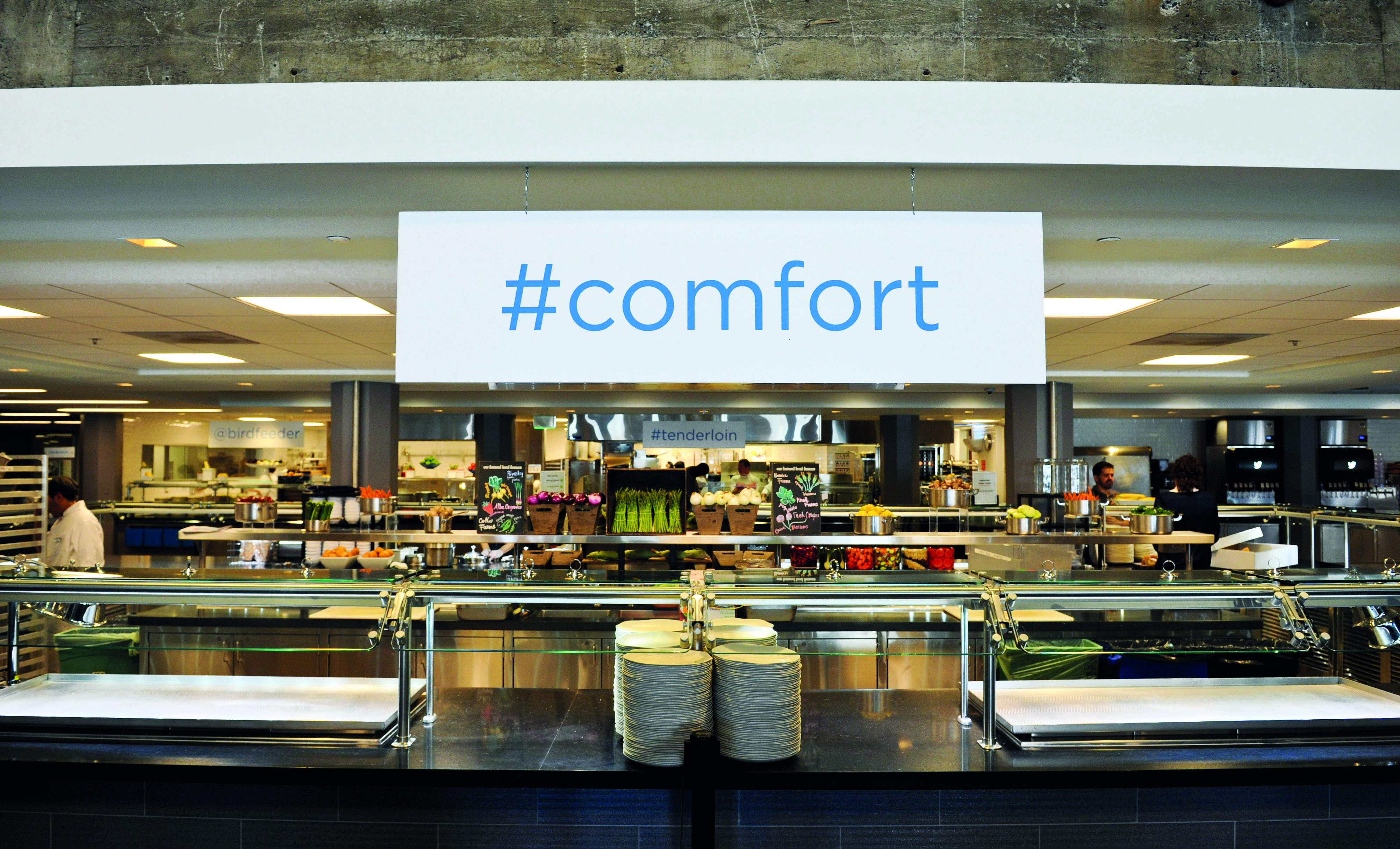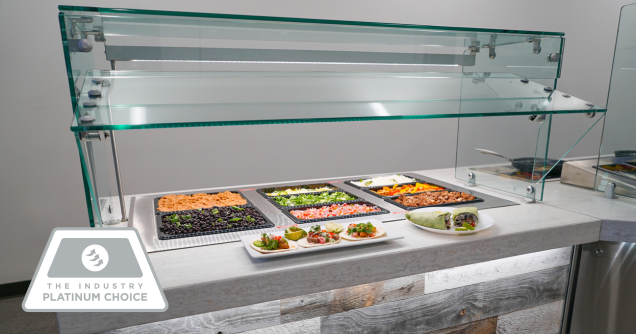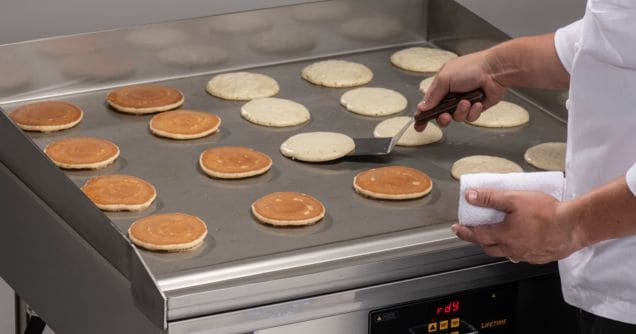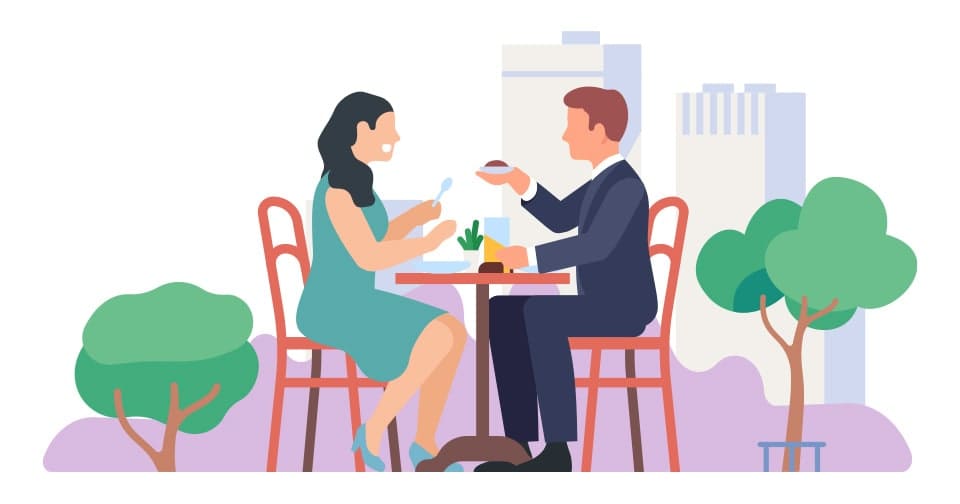
When the city of Mountain View, California, passed a ban on corporate cafeterias offering free food in 2014, few took notice. That is, until this summer, when construction on the new Facebook campus was about to wrap up and the rule would soon be applied.
Now, San Francisco is proposing to ban fully subsidized, corporate cafeterias in an effort – say city supervisors and restaurant association execs – to boost business at local restaurants and retailers. They argue that when workers eat in cafeterias ideprives local restaurants of customers.
“This legislation is about making our city a healthier place to live; it is about supporting local small businesses that make up the backbone of our city,” says San Francisco Land Use and Transportation Committee Supervisor Ahsha Safai, who developed the proposal with supervisor Aaron Peskin. “This is about encouraging employees to leave their offices to add to the vibrancy of San Francisco.”
The Golden Gate Restaurant Association also signed the proposal. “Restaurants only exist through patronage and restaurants in cities serve local businesses, residents and tourists alike,” executive director Gwyneth Borden said on the Association’s website. “San Francisco’s planning code has always required office buildings to provide ground floor retail space, but now space is left unfilled as employees aren’t leaving their offices to eat. The vibrancy of the city is in jeopardy when the business community is not using local restaurants and shops.”
On the streets
Borden goes on to argue that restaurants also get people on the street to patronize other retail, and due to their struggles, traditional retail has been hurting as well. “Unlike global companies with private cafeterias, food outlets are reliant upon generating all their revenue locally so foot traffic is crucial to their survival,” she said. Borden points out San Francisco’s Mid-Market as an example of an area where jobs have increased, but restaurants have struggled. Businesses that existed before the area redevelopment, the GGRA claims, feel their traffic slowed as more large-scale cafeterias have popped up.
Twitter is the largest business to have moved into the area in 2012, occupying the former SF Furniture Mart building at Ninth and Market streets. It offers a fully subsidized, on-site cafeteria as well as Cadillac Bar & Grill, a Mexican concept, and The Market, a high-end grocer, open to the public. The building also once housed two public restaurants, Dirty Water and Bon Marche Brasserie, but those closed amid a rash of failed projects in the area, which some say was due to the lack of local development, not Twitter’s free food.
Since the 2011 tax break offered to Twitter other tech companies, Zendesk, Square, Uber and Dolby have moved their headquarters to the area. There has also been considerable housing growth. Borden, Safai and Peskin make it clear in their proposed legislation that the new ban would apply only to free-food cafeterias, and ones planned for the future, not those already in existence. If the ban were to be passed, the cafeterias in the buildings of businesses like Twitter in San Francisco would be considered “Grandfathered” in; however, it could affect any future expansion plans for them and other private businesses in the city.
The GGRA also clarified in an email to Foodservice Consultant that the ban is not on free food either; on the contrary, the GGRA and city supervisors encourage private companies wanting to offer subsidized meals to do so through vouchers that can be used at local restaurants. They also encourage the option of bringing in meals from local catering companies.
Time to eat
A discussion about the proposed ban was on the agenda for a meeting of the Land Use and Transportation Supervisors on July 30; however, public minutes from the meeting did not detail the outcome of that conversation and the office could not be reached for comment. The GGRA also didn’t know the result of that meeting but did say the legislation will likely go through the legislative process in the Fall.
The proposed ban put some corporate cafeteria operators, consultants and other food industry professionals as well as tech workers up in arms. Social media buzzed with arguments on both sides. Some feel it’s a media stunt; others, a direct attack on the tech giants. Tech employees said they rarely have time to leave their post to go out, grab lunch, eat it, and return to work.
Even with a paid-for-only cafeteria, these employees still won’t leave the office to buy from local businesses in the area.
Another argument against the ban is that even if employees of Twitter and the big tech offices in the area choose to stay on campus for lunch, they may well use local restaurants for dinner and delivery.
There are about 10 restaurants within four blocks walking distance of the Twitter headquarters, and roughly 60 in the entire Mid-Market area. In the Mountain View area, there are about nine restaurants within four blocks of the Facebook campus, and about 45 restaurants within a mile.
Critics of the ban say it allows the city to dictate to private businesses, corporate cafeteria foodservice operators, architects, designers and even foodservice consultants on how they build their foodservice programs. Even equipment manufacturers playing in the space could be affected.
Joe Schumaker FCSI, principal of SCG Foodspace and co-founder and CEO of foodspace + co, a food incubator, acknowledges the controversial nature of the proposed free-food cafeteria ban, but sees an opportunity for both sides to draw up a happy compromise. “At what point can the government dictate how we do business?” he says. “The conversation needs to be more with Twitter, Facebook and the like to see how we can make some of these programs fair for everyone.”
Creative opportunity
Schumaker sees the proposal not just as an issue of restaurant business and fairness, but also one of taxes. When a company offers subsidized meals, he explains, the city collects a swooping tax from the company, but not the sales taxes from what would have been individual retail purchases. The city, therefore, misses out on those tax “payments” by individual employees since they are essentially receiving pre-taxed meals.
“The bigger issue is how does the city want to tax amenities?” Schumaker says. “What about health clubs? If you build a fitness center on campus, your employees don’t need gym membership.”
For foodservice consultants the proposal could lend itself to more creativity. Schumaker has designed cafeterias that bring in food from rotating catering companies while also having the option to retherm and do some cooking on-site. He sees an opportunity to grow the food hall trend in B&I. “Build a food hall in a corporate cafeteria, and suddenly, you’re supporting multiple, independent restaurant brands from the area,” he says.
Others agree. “There won’t be an end to cafeterias in buildings,” says Nahum Goldberg FCSI, principal at NG Associates, who has done a lot of work in the B&I segment, including big tech companies.
“People are working to reach a compromise so the communities get a benefit, politicians make their points, and employees can take advantage of in-house dining.”




